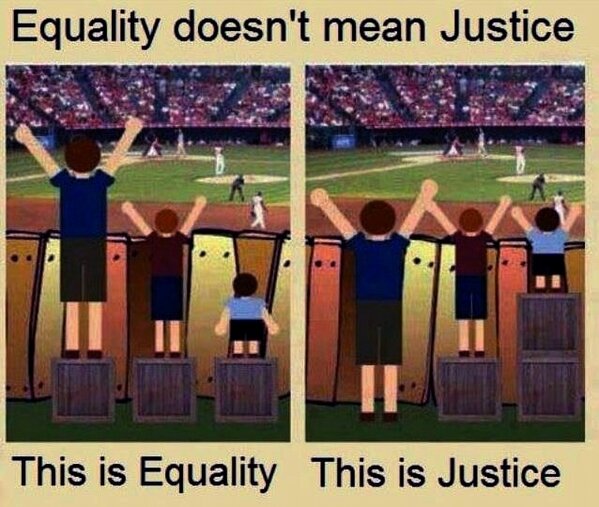I read the arguments in the debate about whether an illiterate disabled woman of color can have agency in what is said and written about her lived experience.
That got me to thinking about Booker Wright.
The story of Booker Wright, like the story of Sojourner Truth, has a central question: whose voice actually dictates the lived experience narratives of oppressed minorities when the very language and media used to tell such stories is completely controlled by the systems that oppress them?
Booker Wright was a Black waiter in a "white's only" restaurant in Greenwood, Mississippi. He was, in fact, the most popular waiter there. He was considered a "good Negro." He knew the hidden curriculum of Jim Crow well and his customers saw him as a "happy Negro."
It was 1965, and a documentary filmmaker for NBC was in Greenwood working on the white man's view of the Civil Rights movement. He heard that Booker Wright sang the menu, Mistral Show fashion, and he thought that an interesting oddity, so he decided to film it. When the camera rolled, the journalist got a surprise. After he was done reciting the menu, Booker realized he had a chance to speak about what life was truly like for him in the South and he did.
That decision cost him his job, his business, his safety, and his life.
Booker Wright was a restaurant owner. His place was considered a safe space for Black families in segregated Mississippi. After his interview aired, his restaurant was destroyed. Booker Wright was pistol-whipped and hospitalized. Eventually, he was murdered.
His interview is considered the pivotal point of that documentary. It made the documentary a success for journalist Frank DeFelitta, but DeFelitta regretted publishing the interview because of the retaliation and harm Wright suffered as a result. DeFelitta claims he asked Wright whether he was certain he was okay with keeping the entire interview in the documentary. DeFelitta had a sense of what that might cost Wright, but he chose to air it anyway.
Yet, this interview was the only time Booker Wright was able to speak his truth in his own voice to the largest audience that might ever hear it. He thought of the better life he wanted for his children and their children and he did what was right knowing it would probably cost him his life.
Sojourner Truth, like Booker Wright, was trapped in the limitations of the times she lived in, despite "breaking barriers" by suing in court to gain her son's freedom, despite speaking at a women's rights convention before women had the right to vote. Everything she did, even as an emancipated woman, was informed by the limits society placed on her by keeping her enslaved, disabled by violence, illiterate, and limiting what any woman could do without a man's consent or protection.
Sojourner Truth's life story was whitewashed of any mention of sexual assault, despite historical evidence that her daughter Diana may have been the product of a rape by John Dumont. In the 136 years since Sojourner Truth's death, the systemic use of her narrative as a symbol stripped of many brutal realities of who she was have left us with yet another gap in American disability rights history. Sojourner Truth continues to exist as niche black civil rights and feminist icon, stripped of the disabilities that made her a complex, three-dimensional historical figure. To do what she did, when she did it makes the complete image of who she was something of critical historical importance. Sojourner Truth took her moment and spoke truth to power. Her example was there when Booker Wright saw his chance and made his decision to risk all and speak out.
Sojourner Truth was a radical activist. But the question of who controlled the narrative of her life experience as an emancipated activist can be answered by how strong her voice was in written versions of her speeches and the autobiographical book written on her behalf. There is a strong record of her active participation in Marius Robinson’s June 21, 1851 transcription of her speech at the Woman's Rights Convention in Akron, Ohio on May 29, 1851, for The Anti-Slavery Bugle. The 'Ain't I A Woman' version done by Frances Gage appearing in the April 23, 1863 issue of the New York Independent, is considered inaccurate. There is no record of Sojourner Truth's agency or participation in rewriting this version of the speech she gave. There does seem to be evidence in notes that she was an active participant in the drafts of her life story.
Truth's ability to gain a platform to speak her truth came at a cost. The resentment of southern white suffragettes and the demands of abolitionists who realized her story could be weaponized by ensuring the language appealed to illusions of what whites expected blacks to sound like. This was done to drive their cause forward.
Despite all this, Sojourner Truth, like Booker Wright, had her moment to speak her truth. No amount of rewriting and whitewashing has erased that event. It sits indelibly in both Black and Disability justice history as a triumph of the spirit. As does Mr. Wright's decision to speak outside the lexicon of his oppressors. In this era of fear and hatred, remembering the courage of all disabled people means the difference between courage and doom.
References:
Nell Irvin Painter, Sojourner Truth: A Life, A Symbol (Norton, 1996), p. 19, and Margaret Washington, "Sojourner Truth's America" (Illinois, 2009), 51–52
Compare the two versions of Sojourner Truth's speech at The Sojourner Truth Project's page:https://www.thesojournertruthproject.com/compare-the-speeches
PBS Interview about Booker Wright Documentary co-produced by his granddaughter and directed by Raymond De Felitta, son of the journalist who produced they original the original documentary. https://youtu.be/RxwLe7HapIA
PBS Interview about Booker Wright Documentary co-produced by his granddaughter and directed by Raymond De Felitta, son of the journalist who produced they original the original documentary. https://youtu.be/RxwLe7HapIA



